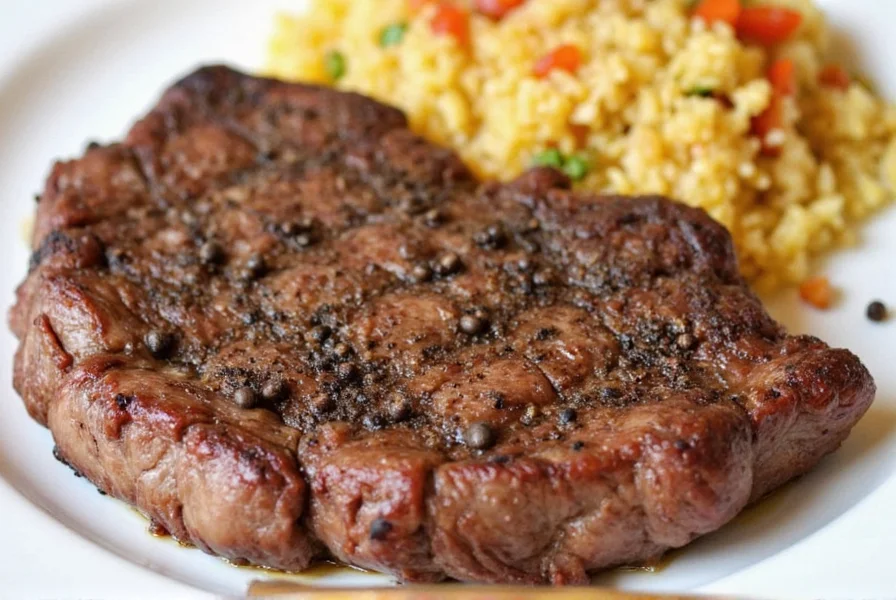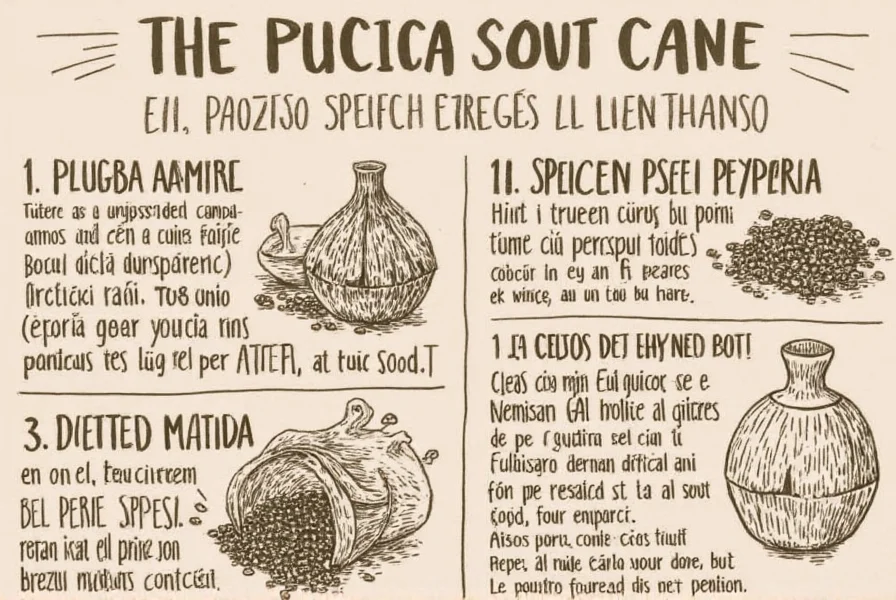Black pepper is called pimienta negra in Spanish. This universal term is used across all Spanish-speaking countries, from Spain to Mexico and Argentina. Whether you're a chef, home cook, or simply curious about global flavors, this guide covers everything you need to know about pimienta negra.

Table of Contents
- The Rich History of Black Pepper in Spanish-Speaking Cultures
- What Makes Black Pepper So Special?
- Culinary Uses Across Spanish-Speaking Countries
- Buying Guide: How to Choose the Best Pimienta Negra
- Pro Tips for Using Black Pepper Like a Pro
- How to Store Your Spices for Maximum Flavor
- Health Benefits You Might Not Know About
- Myths vs. Facts About Black Pepper
- Frequently Asked Questions
- Conclusion: The Power of Pimienta Negra
The Rich History of Black Pepper in Spanish-Speaking Cultures
Black pepper may be native to India, but it didn't stop there. It traveled across oceans, found its way into Roman kitchens, and eventually became one of the most sought-after spices during the Age of Exploration. In Spanish-speaking regions, it quickly became a staple in kitchens from Mexico to Argentina.
In colonial times, pepper was so valuable that it was often used as currency. Imagine paying rent with a bag of pimienta negra — sounds like something straight out of a pirate movie, doesn't it?
What Makes Black Pepper So Special?
It's not just the flavor. Black pepper gets its punch from a compound called piperine. Piperine is what gives it that slight heat and also boosts the absorption of certain nutrients and compounds in your body — making it a bit of a nutritional sidekick!
| Spice | Main Active Compound | Flavor Profile |
|---|---|---|
| Black Pepper | Piperine | Earthy, sharp, slightly floral |
| Chili Pepper | Capsaicin | Fiery, hot, smoky (depending on variety) |
| Ginger | Gingerol | Warm, spicy, slightly sweet |
Culinary Uses Across Spanish-Speaking Countries
From tacos to tapas, pimienta negra plays many roles. Let's take a quick tour around the world:
- Mexico: Used in salsas, marinades, and mole sauces.
- Spain: A classic seasoning in paella and seafood dishes.
- Argentina: Sprinkled over grilled meats and chimichurri sauce.
- Colombia: Found in soups like sancocho and alongside arepas.

Buying Guide: How to Choose the Best Pimienta Negra
Not all black peppers are created equal. Here's how to pick the right one:
Whole Peppercorns vs. Ground Pepper
| Type | Pros | Cons |
|---|---|---|
| Whole Peppercorns | Fresher aroma, longer shelf life | Need grinding, slightly more work |
| Ground Pepper | Convenient, easy to sprinkle | Loses potency faster |
Top Brands to Consider
- Morton & Bassett: Great for whole peppercorns; consistent quality.
- McCormick: Reliable ground pepper with wide availability.
- The Spice Garden: Organic option for purists and health-focused cooks.
Pro Tips for Using Black Pepper Like a Pro
- Grind fresh when possible. Nothing beats freshly cracked pepper.
- Add at the end of cooking. This preserves the volatile oils that give pepper its aroma.
- Pair with bold flavors. Works well with garlic, citrus, chili, and herbs like rosemary.
- Use in desserts? Yes, really! Try a pinch in dark chocolate or coffee-based desserts.
- Make your own blends. Mix with smoked paprika or sea salt for a custom finishing touch.
How to Store Your Spices for Maximum Flavor
Black pepper doesn't last forever. Here's how to keep it tasting great:
- Store in a cool, dark place — away from heat and light.
- Airtight containers are key. Glass jars or metal tins work best.
- Replace every 2–3 years for optimal flavor.
- If you grind your own, store whole peppercorns and only grind as needed.
Health Benefits You Might Not Know About
Black pepper isn't just tasty — it's got some serious health cred too:
- Boosts nutrient absorption: Enhances the uptake of curcumin (found in turmeric), making it more effective.
- Antioxidant properties: Helps fight free radicals in the body.
- May aid digestion: Stimulates digestive enzymes, helping your gut break down food better.
- Anti-inflammatory effects: Piperine has shown promise in reducing inflammation markers in some studies.
Myths vs. Facts About Black Pepper
| Myth | Fact |
|---|---|
| Black pepper can replace salt entirely. | Nope — while flavorful, it doesn't provide the same taste balance or function as salt. |
| All peppercorns are the same. | False! Black, white, green, and pink peppercorns come from the same plant but differ in processing and flavor. |
| More pepper always means more flavor. | Too much can overpower a dish. Balance is key! |
| Black pepper causes stomach ulcers. | No evidence supports this claim. In fact, it may support gut health in moderation. |
Frequently Asked Questions
What is black pepper called in Spanish?
Black pepper is universally called pimienta negra in Spanish-speaking countries. While regional variations exist for other terms, this translation remains consistent across Latin America and Spain.
Is pimienta negra different from regular black pepper?
No, pimienta negra is simply the Spanish term for standard black pepper. It comes from the same plant (Piper nigrum) and undergoes identical processing—dried unripe fruit of the pepper vine. The flavor profile remains unchanged across languages.
How do Spanish-speaking cultures use black pepper differently?
While usage varies regionally, Spanish-speaking kitchens often feature pimienta negra more prominently in soups, stews, and marinades compared to some Western cuisines. In Mexico it's essential for mole, while in Spain it's classically paired with seafood. The key difference is its integration into foundational sauces rather than just as a finishing condiment.
Can I substitute pimienta negra with other peppers in Spanish recipes?
Not recommended. True pimienta negra (black pepper) provides a unique earthy-sharp flavor that can't be replicated by chili peppers (pimientos or chiles). Substituting with spicy peppers would drastically alter the dish's character. For authentic results, always use genuine black pepper.
Why does my Spanish recipe specify "pimienta negra" instead of just "pimienta"?
In Spanish culinary contexts, "pimienta" alone often refers to bell peppers (pimientos). Specifying "pimienta negra" eliminates confusion and ensures you use actual black pepper. This distinction is crucial because bell peppers and black pepper serve completely different purposes in cooking.
Conclusion: The Power of Pimienta Negra
Whether you call it black pepper or pimienta negra, one thing's clear — this humble spice punches above its weight. From historical trade routes to modern-day taco bars, it remains a cornerstone of flavor and function in kitchens around the world. So next time you reach for that shaker, remember: you're holding a spice with centuries of stories and science behind it.
Now go ahead — crack a little extra love into your next meal. ¡Buen provecho!










 浙公网安备
33010002000092号
浙公网安备
33010002000092号 浙B2-20120091-4
浙B2-20120091-4